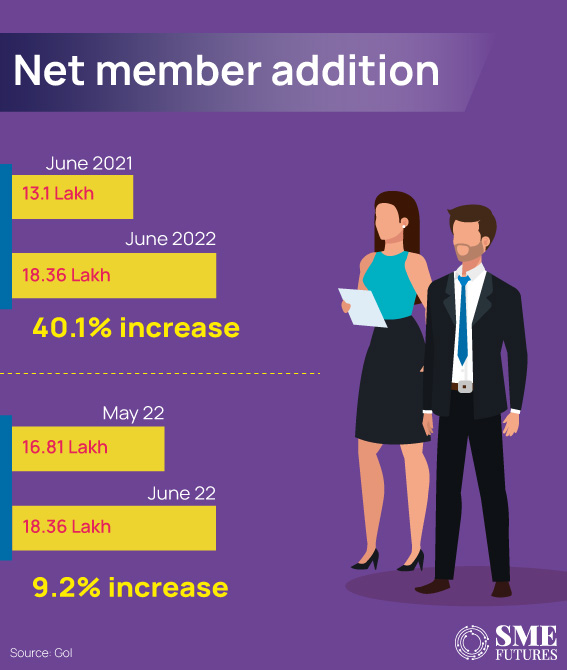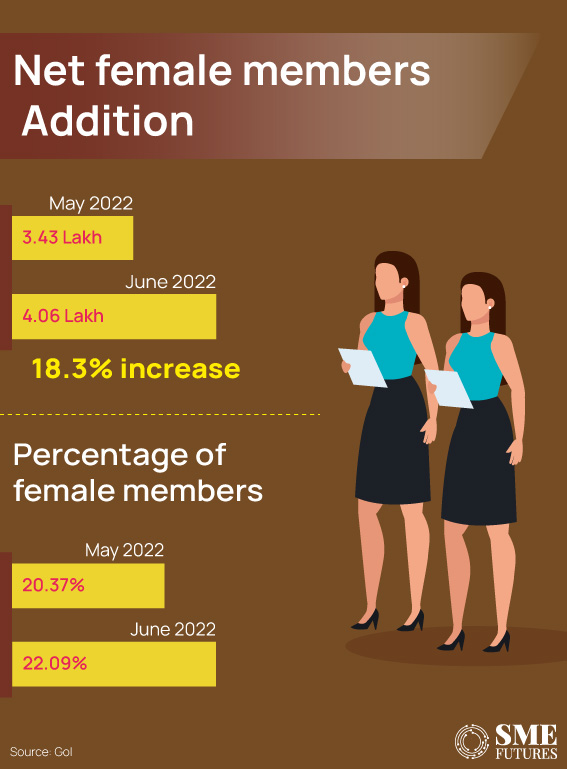The gender gap in the Indian workforce has always been noticeable. The working women in our country have been attempting to fill this void since the beginning, but they continue to lag in terms of the number of permanent employees in the country.
However, an improvement in the picture has been observed.
The Employees’ Provident Fund Organisation (EPFO) recently released some data which reveals that there has been an increase in the female payroll in the country. According to this data, the number of additions made to the employee workforce under the provisional payroll of companies in the country, has led to an improvement in the picture.
This implies that there has been a significant rise in the number of working females in the organised sector’s workforce.
For those unfamiliar, the EPFO is one of the two major statutory social security bodies under the Ministry of Labour and Employment, and it is responsible for the regulation and management of provident funds in India, along with the Employees’ State Insurance.
The Indian workforce is increasing
The EPFO’s provisional payroll statistics figures reveal that Indian organisations added 18.36 lakh new employees to India Inc. in just one month i.e., in June 2022. While in May 2022, the employee addition was way lower.
If we take the percentage into consideration, in comparison to the previous month i.e., May 2022, the net member addition for June 2022 increased by 9.21 per cent.
Also Read: Greater participation of women in the workforce can make Indian MSMEs Aatmanirbhar
According to the payroll statistics compared year over year, the net member addition in June 2022 increased by 5.53 lakhs over the same period in 2021.

Female participation is soaring
The EPFO has noted a huge increase in the female workforce.
An analysis of enrolment by gender reveals that there are now 4.06 lakh net female members, up from 3.43 lakh the previous month, denoting an increase of 18.37 per cent.
Furthermore, the participation of women workers in the organized sector has increased significantly over the last 12 months. As a result, the percentage share of the net female member addition has increased from 20.37 per cent in May 2022 to 22.09 per cent in June 2022.

Around 10.54 lakh of the 18.36 lakh new members who were enrolled this month were the first to be covered by the EPF & MP Act, 1952.
Since April 2022, there has been a rising trend of new members joining the workforce. A total of 7.82 lakh net members switched positions inside the EPFO-administered workplaces, rejoined the EPFO, and chose to transfer funds from their prior PF accounts to their current accounts rather than request a final PF withdrawal.
The number of new students that enrolled this month was higher than the monthly average during the previous fiscal period. The age group of 22 to 25 years witnessed the highest number of net enrolments, with 4.72 lakh additions during June 2022, according to a comparison of payroll data by age. This demonstrates that a significant percentage of first-time job searchers are entering the workforce in the organized sector.
The establishments covered in the states of Maharashtra, Karnataka, Tamil Nadu, Haryana, Gujarat, and Delhi continue to be in the lead by adding about 12.61 lakh net members during the month of June, which is 68.66 per cent of the total net payroll addition across all age groups, according to a comparison of payroll figures by state.
According to the industry-specific classification of payroll data, “expert services” (which includes manpower agencies, private security firms, small contractors, etc.) and “trading-commercial establishments” account for the majority of the month’s total member addition at 47.63 per cent each. If we compare industry-specific data with that from the previous month, larger enrolments have been seen in the “schools,” “garment making,” “expert services,” and “textile” industries, among others.
The payroll data is provisional since the generation of this data is a continuous exercise, as updating employee records is also a continuous process. Hence, the existing data gets updated every month. From April 2018, the EPFO has been releasing payroll data, covering the period from September 2017 onwards.











